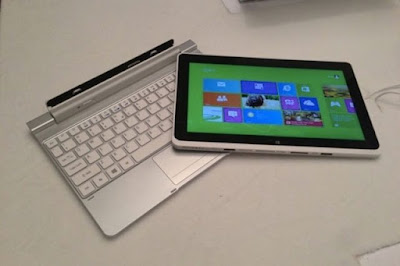Are you expecting to get a new Windows 8 device under the tree this year? With the affordable prices Microsoft and their PC partners are chasing lately, many people will no doubt be getting those for Christmas.
If you are getting your hands on Windows 8 for the first time, here’s what you need to know to set up that new device. (And if you’re giving a Windows 8 device to someone, I highly recommend that you also give them a link to this article so you won’t have to answer all these questions yourself!)
Perform Updates. Most new devices should arrive with the latest software, but you may have picked up a device that was sitting in a warehouse for a while. The updates — Windows 8.1, Windows 8.1 Update and further updates — have made Windows 8 easier to use, smoothing over rough edges and providing more features. Updating is simple. Click the Desktop tile, open the Control Panel, then update from there.
You can also press “Windows Key-C” or swipe in from the right of your screen to open the Charms, tap or click Settings, tap or click Change PC settings, and select “Update & recovery” to use Windows Update from the new touch interface.
Where’s My Desktop? The desktop is easy to find — just click the Desktop tile on your Start screen or press “Windows Key-D” anywhere to be whisked straight to your desktop.
Modern Windows laptops without touch screens may make this even easier, as they’ll skip the whole touch-based Start screen and go straight to the desktop when you log in. But, if your computer has a touch screen, it won’t do this. To adjust these really crucial settings — like whether your computer boots to the Start screen or desktop, or whether the “hot corners” pop up bits of touch interface when you move your mouse to them — right-click your desktop taskbar, click Properties, and use the options hidden away on the Navigation tab.
Where’s My Start Menu? The Start menu is gone, and it won’t be returning until Windows 10. Yes, Microsoft is skipping Windows 9. In the meantime, you can use the All apps screen to launch apps. Click the Windows button in the bottom-left corner of your screen or press the Windows key to open the Start screen. Click or tap the Down arrow at the bottom-left corner of your screen and you can browse all your installed applications. If you like, you can set the Start button to automatically open this screen when you click it — just use the Navigation options I mentioned above.
For now though, you may want not wait for Microsoft’s Windows 10 development cycle and get a Start menu back today. There are a bunch of great Start menus you can install, and many of them are free. I wouldn’t be surprised if some Microsoft employees even use these third-party Start menus because they can’t get used to Windows 8. After all, they’re bringing back the Start menu for a reason.
What About That New Touch Interface? Although Microsoft insisted their new interface — formerly called “Metro” — was for everyone, even PC users without touchscreens, it hasn’t worked out that way. Few PC users without touch screens ever use that stuff, and for good reason. if you do have a touch screen, it may be tempting to play with. Learn all the new touch controls if you do. The new interface isn’t all bad, and you may be one of the people that enjoys using it.
If you have a Windows tablet and need to use that touch interface, you’ll find the app selection on the Windows Store isn’t anywhere near Android or iPad tablets. But it’s not completely terrible. Microsoft’s own services are well-represented, and many of the standard media apps — Netflix, Hulu, Amazon Kindle — are available. Internet Explorer is actually an excellent touch browser, and it offers Flash support so you can view full desktop sites on your tablet — unlike Android and iOS.
After some time with a new Windows 8 PC, you’ll find that it’s just like Windows 7 — only with a new interface bolted on top. Microsoft has made it ever easier to avoid that stuff over the past few years. In Windows 10, they’re working on merging them together into one interface that makes sense. Windows 10 is rumored to be a free upgrade to Windows 8 users, so things will hopefully get better if you can just hold on.
If you need help moving your files to your new PC, consult my easy moving-day guide. If your new PC seems overloaded with software you don’t want, consider getting rid of that bloatware to speed it up. And, most importantly, enjoy your new gadget.














